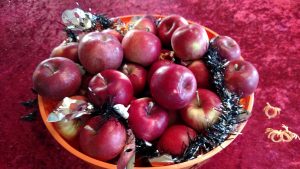Guest Blog: Addressing Senior Malnutrition
When it comes to consuming sufficient amounts of vitamins and minerals, turns out many seniors aren’t. Chronic disease, dietary restrictions, limited income and access to food, reduced social contact, and other factors can increase a senior’s risk for malnutrition. There are simple solutions however for addressing the problem – don’t miss this quick guide:
Should Seniors Take a Multivitamin?
While the research on the need for multivitamins in the average American adult’s diet goes back and forth, when it comes to senior health specifically, experts can agree on some things. With older age often comes diminished appetites, decreased digestive functioning (which can affect nutrient absorption), as well as less energy, bone loss, and reduced muscle mass.
While seniors should invest in core diet staples like fresh fruits and vegetables, whole grains, nuts, legumes, and lean proteins, they may also want to talk to their doctor about nutritional supplements like multivitamins.
Multivitamins for older adults can vary. Some multivitamins with added calcium and vitamin D are ideal for active women over 50, for example, while others may come with herbal ingredients that offer memory or energy improvement.
Easy Ways to Boost Nutrient Intake
While it might seem like nutrition shakes are the simplest solution for undernourished seniors, there are also fairly simple ways to incorporate more whole foods into a daily diet.
A high-powered blender is the ultimate nutritional tool a senior has at their disposal. These hi-tech devices process food at super speeds, helping to easily blend even the toughest ingredients like nuts and seeds. They are especially handy if you are a senior who struggles with dysphagia, the inability to safely swallow foods.
- High-power blenders allow you to mix loads of healthy ingredients like fresh fruits, veggies, beans, greek yogurt, nut butters and more into smoothies, shakes, soups, stews, and dips. This simplifies the process of putting a meal together and is a much healthier alternative to processed, packaged and frozen meals.
- Recruiting help from a care network can also help boost a senior’s nutritional intake, ensuring regular round-the-clock meals that offer variety in addition to nutrients. Free, online tools like CaringBridge.com and TakethemAMeal.com allow family caregivers, neighbors, or simply friends to coordinate a digital calendar where people can sign up to help a senior with meals.
- Local nonprofit services may be an alternative as well if a substantial care network is not in place. Meals on Wheels, for example, has chapters nationwide that deliver daily meals to seniors in need, and free senior transportation services are available in many regions and can help seniors get to the store to buy groceries or pick up food.

